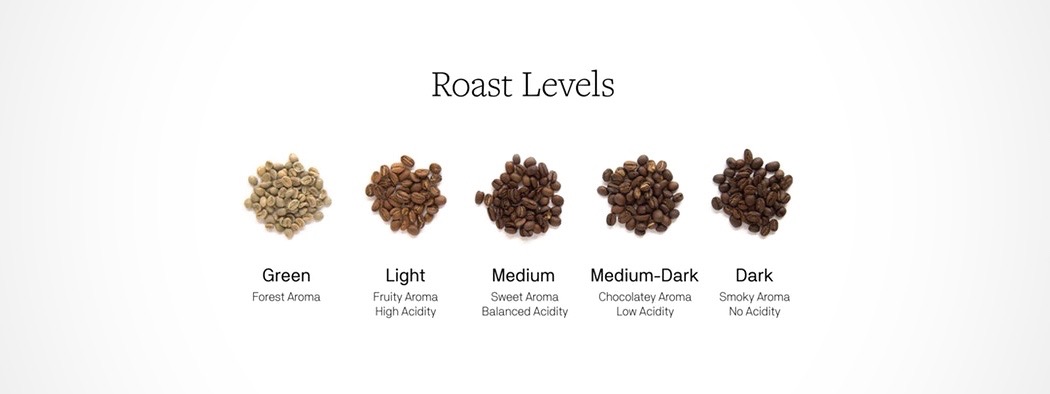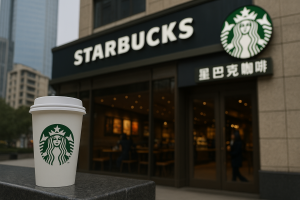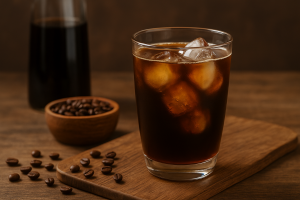
The Science of Coffee: Understanding Extraction and Flavor Profiles
The Science of Coffee: Understanding Extraction and Flavor Profiles
- Adam Smith
- 20-10-2023
- 20-10-2023
- 1275 views
- Information

For many, a perfect cup of coffee is a daily necessity. But have you ever wondered about the science behind what makes your coffee taste the way it does? Coffee is a complex beverage with a myriad of flavor profiles, and its creation is a science in itself. In this blog, we’ll dive deep into the world of coffee, exploring the science of extraction and how it influences the diverse flavors that coffee aficionados in the USA savor every day.
The Coffee Extraction Process

Coffee extraction is the process of dissolving and extracting flavors from ground coffee beans using hot water. The key to a great cup of coffee lies in understanding this intricate process:
- Solute and Solvent: In the coffee extraction process, the ground coffee acts as the solute, and hot water serves as the solvent. Water is an excellent solvent due to its ability to dissolve a wide range of compounds.
- Extraction Rate: The extraction rate determines how quickly water dissolves compounds from coffee grounds. Factors like grind size, water temperature, and brew time impact this rate.
- Taste Components: Coffee contains a variety of soluble compounds, including acids, sugars, oils, and bitter compounds. The flavors you taste in your cup are the result of these compounds dissolving into the water.
- Balancing Act: Achieving a balanced extraction is crucial. Over-extraction (where too many compounds are dissolved) can result in bitterness, while under-extraction (insufficient compounds dissolved) can lead to sourness.
The Role of Grind Size

Grind size is a fundamental factor influencing the coffee extraction process. It affects the surface area of the coffee particles exposed to water, which, in turn, influences the extraction rate. Here’s how different grind sizes impact your coffee:
- Coarse Grind: Coarse grind beans are larger and take longer to extract. They are often used in methods like French press, where a longer brew time is possible. Coarse grind coffee tends to result in a full-bodied cup with less acidity.
- Medium Grind: Medium grind beans are versatile and suitable for various brewing methods, including drip coffee makers and pour-over. The medium grind balances flavor extraction, leading to a well-rounded cup.
- Fine Grind: Fine grind beans have a smaller particle size and extract quickly. They are commonly used in espresso machines, which exert high pressure and short brew times. Fine grind coffee tends to be more concentrated and flavorful.
Brew Time and Water Temperature
The brew time and water temperature are critical factors in coffee extraction:
- Brew Time: The duration coffee grounds are in contact with hot water significantly impacts extraction. A longer brew time allows for more compounds to dissolve, but it can lead to over-extraction. The ideal brew time varies depending on the brewing method.
- Water Temperature: Water temperature affects the rate of extraction. Hotter water generally dissolves compounds more quickly. The ideal temperature for brewing coffee is typically between 195-205°F (90-96°C). Water that’s too hot can lead to over-extraction, while water that’s too cool can result in under-extraction.
The Impact of Roast Level

The roast level of coffee beans plays a crucial role in flavor development:
- Light Roast: Lightly roasted beans preserve more of their inherent flavors and acidity. They often exhibit floral, fruity, or tea-like qualities and have a brighter, more pronounced acidity.
- Medium Roast: Medium roasted beans strike a balance between preserving origin flavors and developing roast flavors. They have a fuller body and a broader range of flavors.
- Dark Roast: Darkly roasted beans have developed roast flavors, which can include smokiness, bittersweet chocolate, and caramel. The origin characteristics are often eclipsed by the roast.
Single-Origin vs. Blends
Coffee can be sourced from a single geographic location (single-origin) or blended from multiple sources. Understanding these options can help you choose the flavor profile you prefer:
- Single-Origin: Single-origin coffees highlight the distinct flavors of a specific region, offering a unique taste experience. For example, Ethiopian coffees are known for their floral and fruity notes, while Colombian coffees often feature a well-balanced profile with a medium body.
- Blends: Coffee blends combine beans from different regions to create a balanced and consistent flavor. Blends are crafted to provide a harmonious taste that suits a wide range of preferences.
Exploring Flavor Profiles

Coffee flavor profiles are as diverse as the regions from which beans are sourced. Here are some of the key flavor categories you can encounter:
- Fruity: Coffees with fruity flavor profiles often have notes of berries, citrus, or tropical fruits. Ethiopian Yirgacheffe is a famous example of a fruity coffee.
- Nutty: Nutty coffees offer flavors like almond, hazelnut, or walnut. These are often found in medium roast coffees.
- Chocolaty: Chocolaty coffees exhibit cocoa and chocolate notes, often with a hint of sweetness. Colombian coffees are known for their chocolaty profiles.
- Floral: Floral coffees feature delicate, aromatic notes like jasmine, lavender, or honeysuckle. These are commonly associated with Ethiopian or Kenyan coffees.
- Earthy: Earthy flavors are reminiscent of soil, herbs, or woody undertones. Sumatra coffees often have earthy characteristics.
- Spicy: Spicy coffees offer a range of warm, aromatic flavors, such as cinnamon, clove, or cardamom. These notes are commonly found in Indonesian coffees.
Conclusion
The world of coffee is a captivating journey of extraction, science, and flavor. Understanding the role of grind size, brew time, and water temperature, along with the impact of roast levels and the choice between single-origin and blends, allows you to explore and appreciate the diverse flavors that coffee offers. Whether you savor a bright and fruity Ethiopian coffee or a rich and chocolaty Colombian brew, every cup is a unique experience, and the science behind it is what makes it truly remarkable.






















